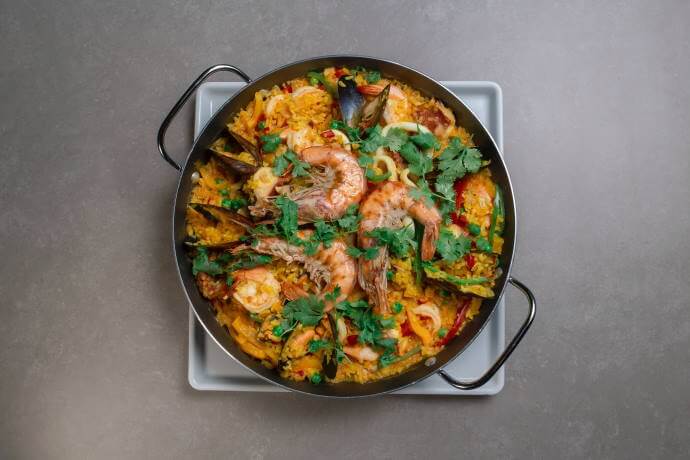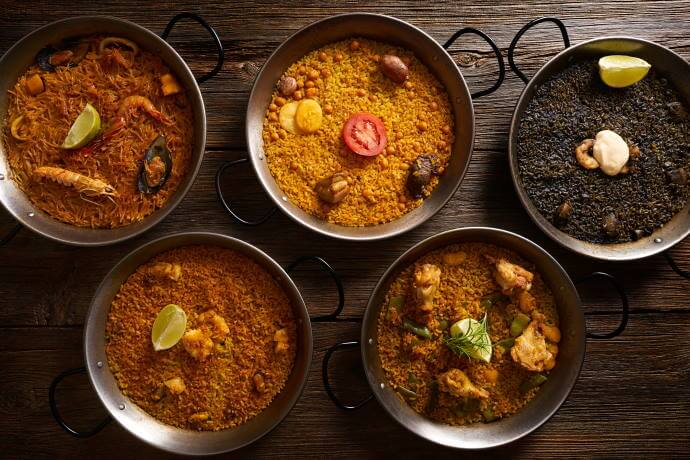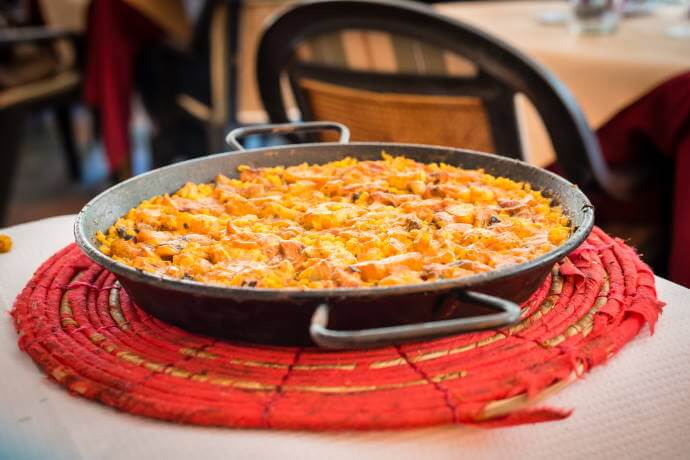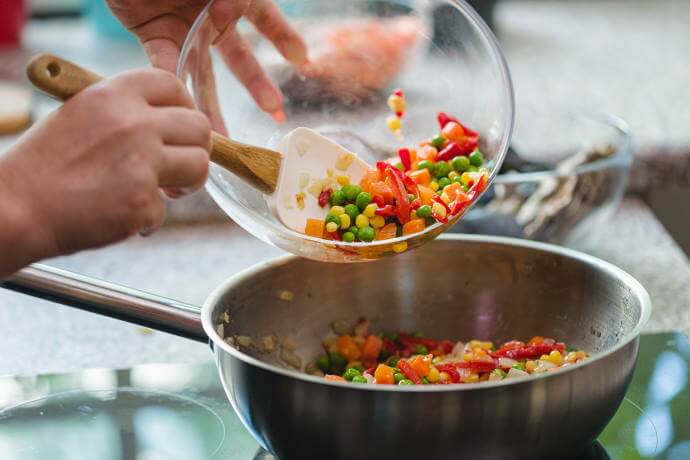Did you know that paella is one of the most famous dishes in Spain and, more specifically, in Valencia? This tasty dish has become nationally and internationally known, and it is almost a mandatory item in all the restaurant menus in the city. One thing is for sure: if you travel to Valencia without tasting one of the region's cultural and gastronomic symbols, you will miss out on a fantastic gastronomic experience (especially for food lovers). The truth is that tasting a meal right at the source is always the best way to try something new. Here you will learn a little bit about the history of this mouthwatering and unique dish, about the different versions and the original recipe, so you can recreate it at home. Get ready to make the perfect paella!
What does “paella” mean?

Did you know that paella is originally the name of the pan used to prepare this traditional dish, and not the name of the dish itself? The dish simply acquired the name of the object in which it is cooked and traditionally served. Paella is a polished or coated steel pan that resembles a shallow frying pan. It is wide, with an almost flat bottom that ensures that the ingredients are cooked evenly, and has a handle on each side. This format makes it easier to stir the rice and components of the dish while cooking. However, there are different theories about the origin of the name "paella". Some say that the dish was originally prepared by a man for his bride, and that the word is a portmanteau of the expression "para ella", which means "for her". Perhaps that is why in ancient times the preparation of paella was left to men. There is also a theory that the word paella means "leftovers", translated from the Arabic word baqiyah, under Moorish influence.
The different types of paella

Although the real and original paella is prepared with rice, chicken, rabbit, garrofones (butter beans), judía verde (green beans), olive oil, tomatoes, saffron, paprika and sometimes snails and duck, there are also different versions of the recipe. However, it is important to remember that these are variations of the original recipe. Over the generations, other ingredients have been added. The famous paella spread to other regions of Spain, especially to the coastal regions. Thanks to this spread, a seafood version was created, which today includes shrimp, squid and mussels, although other seafood, fish or other ingredients can be used. This seafood paella is called Paella Marinera and is probably the most popular version today. There are versions that can also include the ingredients of the original paella, making it a mixed dish. There are even darker paellas, thanks to the squid ink. The truth is that the recipe always depends on the cook (and the region). Everyone makes it differently and adapts it to different regions and situations.
The history behind this famous dish

The origins of this dish are quite humble and go back centuries. It first appeared in the Albufera region, known for its rice fields (a Moorish legacy) and one of the largest natural ports in the Mediterranean. This dish was what local peasants and agricultural workers cooked and ate for lunch. The Albufera region, just south of the center of Valencia, is considered one of the most important rice-growing areas in Spain. Since rice was an abundant ingredient, the workers would gather for lunch, take what they had harvested, and cook paella over a fire, outdoors, with orange branches. It is believed that with the advent of better irrigation in the 10th century, rice cultivation increased throughout Spain. The dish became popular in the Valencia region when people began cooking rice dishes outdoors, especially at family gatherings. And did you know that paella was originally known as "Arroz a La Valenciana"? Some people still call it that. Since ancient times, paella was also consumed directly from the pan in which it was cooked, and everyone used their own wooden spoon to eat it. This kind of stew of rice, meat and vegetables can be cooked and eaten at any time and occasion, although it is more common when friends and family get together, on weekends or traditional holidays and celebrations, for example.
The recipe

To prepare a real paella, you must follow some steps, in order to guarantee the best result. The key ingredients are: chicken, rabbit (or/and duck), tomatoes, green beans (called judía verde or ferradura), butter beans (garrafón), olive oil, paprika, saffron, salt and rice. The quantities always depend on how many people you are cooking for! For the meats, you can either mix several or choose just one or two. If you want, you can also use garlic, although it is not traditionally used.
- The first step is to prepare the stir fry. Put plenty of olive oil in the pan (the heat should be medium/high), sprinkle the salt in a circle around the edge of the pan and add the meat once the pan is hot. Aim to sear the meat on all sides over the course of about 20 minutes (turning every 3-5 minutes). When the meat is done, push it to the edge, add the chopped judía verde (green beans) to the center of the pan and let them fry for a few minutes (maybe 3 is enough). Then add the butter beans, also in the middle. Open a small gap in the middle and add the grated tomato. After a few minutes, add the paprika and saffron and mix everything well.
- The next step is to add the water. When the water from the tomatoes has evaporated, it is time to prepare the broth. Add water depending on the amount of rice you want to use. You can also put a sprig of rosemary in the center and remove it before adding the rice if you like the flavor. Taste to see if you need more salt! Let the broth cook for about 30 minutes or even longer. You can use a trick to know how much water to add: stick the handle of a wooden spoon in the center of the pan and see the line to which the water has risen. This way you will have an idea of the ideal amount of water you need to add the rice.
- The next step is to add and cook the rice. Regardless of the way you place the rice, the important thing is to distribute it in a circular way, from the edges to the center, and evenly. A certain phenomenon is expected to occur, the so-called socarrat (the crispy and caramelized bottom). The rice at the bottom of the pan turns brown as the broth is absorbed – but it's not burnt rice and it adds texture and flavor to the dish. To prevent that rice at the bottom from burning, you can always scrape the bottom with a spoon, to feel if the rice is sticking. However, avoid stirring the content too much and let the rice cook. To create the crunchy effect (which can be difficult to achieve), try turning up the heat when the rice is almost cooked. After about 30 seconds, remove from heat. The cooking time will depend on the type of rice you use.
- Finally, let the paella rest for a while (maybe 5 minutes is enough). Some people cover the paella with a cloth or other material, such as aluminum foil. To follow the tradition, eat straight from the pan. Enjoy your traditional meal!



